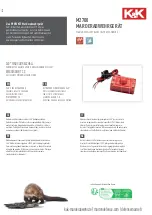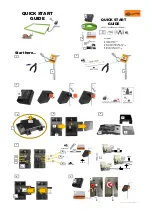
DESCRIPTION AND OPERATION
REDUNDANCY LINK
2 - 4
WBPEEUI230019A0
®
There are two separate communication paths on the module
mounting unit backplane circuit allotted for Controlway com-
munications. Data is transmitted over both channels simulta-
neously and received in separate receivers where it is checked
for integrity. In this way, the Controlway minimizes the
chances that a failure on a circuit board, or the backplane will
cause loss of module communication.
As point data between intelligent modules travels on the bus,
the MFP module does a bit-by-bit comparison. The Controlway
interface also allows the MFP module to operate on the module
bus by operating in an 83.3 kilobaud mode.
REDUNDANCY LINK
The redundancy link is a one megabaud serial link between a
primary and backup MFP module in a redundant configura-
tion. This link also has full DMA capabilities. As the primary
module executes control algorithms, the backup module waits
in hot standby mode and receives a copy of all block outputs
over this link. If for any reason, the primary module fails, the
backup module takes over immediately without any process
interruption provided there is no excessive checkpoint overrun
caused by the function block configuration.
NOTE: Firmware revision levels must be the same in the primary
and secondary MFP modules. If the firmware revision level is differ-
ent and a failover occurs, the redundant MFP module may operate
erratically.
STATION LINK
The station link controls the serial communication between the
MFP module and stations. This link has two modes of opera-
tion. When used with the NDCS03 Digital Control Station, it
provides a five-kilobaud serial channel for up to eight stations.
This link connects to the NTMP01 termination unit via the
NKSE01 or NKSE11 cable. This link requires serial link wire to
connect to NIMP01 and NIMP02 termination modules.
When interfacing with the IISAC01 Analog Control Station, the
communication rate can be five kilobaud or 40 kilobaud and
the data is direct memory accessed into or out of MFP module
memory. The 40-kilobaud link supports up to 64 stations, but
requires two drivers to accomplish this. Therefore, two connec-
tors provide for two NKSE01 cables and up to 32 stations can
be driven off each. The data transmitted over both links is
identical, so the stations must have an address from zero to 63
without duplication. The five-kilobaud link supports up to
eight stations.
















































